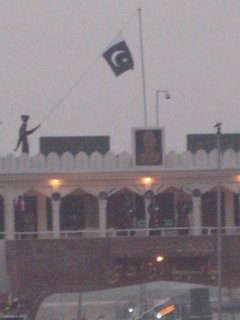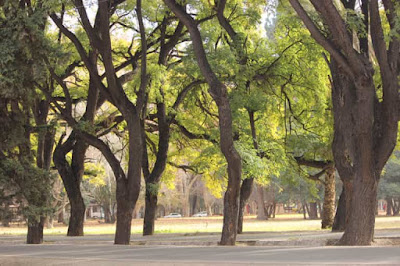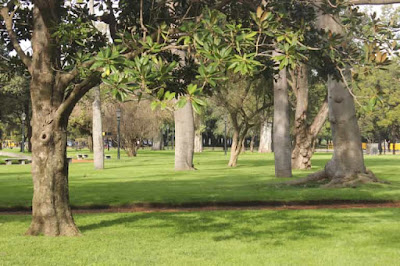At this point the Anchorage International Film Festival (AIFF) website doesn't give us much info about the films - the name of the film and filmmaker, a screenshot, the category it's in (feature or short basically), and when and where it will be shown. There's still a few weeks to go to get more up, but in the meantime, I've just gone through the screenshots and picked some that jumped out at me. The first set was posted here.
This is the second set. It's not totally random. It's based on the visual impact on me of the screenshot, which is not insignificant for a film. But each of us will pick different shots. Since most of the films in the festival are shorts, most of the ones so far are also shorts.
As I'm doing this and the previous post, it does seem that the screenshots are posted more or less in the order they are showing. So these first two posts get us through the first weekend and up to Tuesday (Chasing Fins.)
So consider this an appetizer for the festival which starts Friday December 5. Go check out the AIFF website yourself.
As I regular cyclist, I immediately saw this as someone riding a bicycle, though I realized later it could also be a motorcycle. And he has such a determined look on his face. And the top of his head is cut off. And, as you read below, here's another Alaskan film maker.
From Athens International Monthly Art Film Festival:
"'Ellie,' directed by Vinny O'Brien, is a refreshing addition to the world of independent action filmmaking. O'Brien, a former Golden Glove champion and Alaskan commercial fisherman turned filmmaker, makes his directorial and producer debut with this project.
It skillfully navigates the delicate balance between drama and action, seamlessly blending heart-wrenching moments of familial connection with adrenaline-pumping sequences, creating a captivating cinematic experience."
The plot revolves around a father on the run from ruthless foes, using games to distract his daughter from the impending danger. Unintentionally, he prepares her for the perilous journey ahead, relying on resourcefulness to protect her and strengthen their bond. The premise is a clever idea, and O'Brien executes it with finesse.
The film shines in various aspects, starting with its well-written script that explores the intricate dynamics of the father-daughter relationship. The acting is commendable, capturing the emotional nuances required for such a narrative. The cinematography adds depth to the storytelling, capturing both the tender moments and the intensity of the perilous journey. . . "
Saturday, December 6 Part of Shorts Program "Thrillers" starting at 8:30pm at Alaska Experience Theater
But I'm A Shoe - Chen Drachman
I've been through a number of airports in the last couple of months, so I'm guessing that influenced my decision to include this one. And I like the style of the animation.
"After flying around the country attending back-to-back festivals and award events, Ms. Drachman was exhausted. “In my state of sleep-deprived delirium, I was conversing with myself,” she recalled.
She dubbed the two voices in her inner dialogue “Chen A” and “Chen B.”
“Chen A said, ‘I just do not have the energy to deal with air travel right now. I wish I could turn myself into a small object for the duration of the flight.’
“And Chen B was like, ‘What would you turn yourself into if you could?’
“Chen A said, ‘I think I would turn myself into a shoe — I’d split my consciousness between two shoes.’
“Chen B said, ‘Oh yeah! The TSA officer would be like, ‘Please take off your shoes,’ and I would be like, ‘But I am a shoe!’
“A few days after I got home, I wrote it down and started to think practically how I might do it,” Ms. Drachman concluded."
Okay, readers. Your assignment is to think about how you might turn this into a movie. Then on Saturday, December 6, at 10am you can compare your version to the filmmaker's version at Shorts Animation Program at the Museum.
Guanaco - Mercedes Jerkovic & Martin Fisner
This one is so bizarre that I just had to include it. Could I make up a story that would include these characters? Sure, but it would take a while.
"Filmed in Ushuaia and inspired by a real event, this is a portrait of the torment of living at the end of the world. Between the majesty of the Andes and the mysterious custody of the Selknam spirits, from the island of Tierra del Fuego you can check out any time you like, but you can never leave."
Monday, December 7 at the Alaska Experience Theater in the Uncensored Shorts Block that begins at 10:30am
Lemon - Beth Curry
The sofa is yellow, but where is the lemon? The camera caught this kid being a kid. (Turns out the kid is Lemon.) There's a fair amount about the screenwriter Beth Curry, including a long paywalled series on Medium, but not much on Lemon. There is a Lemon website, but it's mostly pictures. A brief bio of the filmmaker. Here's a bit about the film itself.
"We are in a time where fear seems ever-present. Lemon has been conditioned to fear the outside world. But soon, she learns to let go of that conditioning and dares to see what life has to offer. Perhaps we could all learn a thing or two from Lemon...to let go of fear and to LIVE!"
And there's a brief video trailer.
It's showing Monday, December 8, at 5:30 pm at the Bear Tooth in the Shorts Program: Female Filmmakers Showcase.
Breaking The Tide - Katrin York
Having grown up on the beaches of Southern California, how can I not pick this shot. The surfboard leash is still attached to the ankle, so it's probably on the other side of the wave.
This film is in the same program as Lemon: Monday, December 8, at 5:30 pm at the Bear Tooth in the Shorts Program: Female Filmmakers Showcase.
From the Hawaiian International Film Festival (the perfect festival for this film):
"On the North Shore of Oahu, siblings Jesse and Hunter are shaped by the unforgiving surf culture and their father''s relentless pressure. What begins as playful dares escalates into a dangerous rivalry, pushing them toward a life-altering reckoning with their fears, their bond, and the powerful tides that control them both."
You can see a trailer at Seed&Spark.
Chasing Fins - Tomas Koeck
How can this shot not grab my attention? This shark seems to be looking right at me.
This film is part of a series Ocean State, sponsored by the Nature Conservancy and others. From The Nature Conservancy:
"Earlier this year, Silent Flight Studios released the Ocean State pilot episode, Chasing Fins, which received enthusiastic feedback from audiences. The special, focusing on the lives and migrations of Rhode Island’s shark species and featuring the Atlantic Shark Institute, aired locally on Ocean State Media in August and is now available on PBS.org and its streaming platform.
Tomas Koeck is an award-winning filmmaker, journalist and expeditionist recognized by the Society of Professional Journalists for excellence in reporting and storytelling. Koeck has been on assignment for National Geographic, PBS Nature, Smithsonian Channel and the National Audubon Society, among others."

































